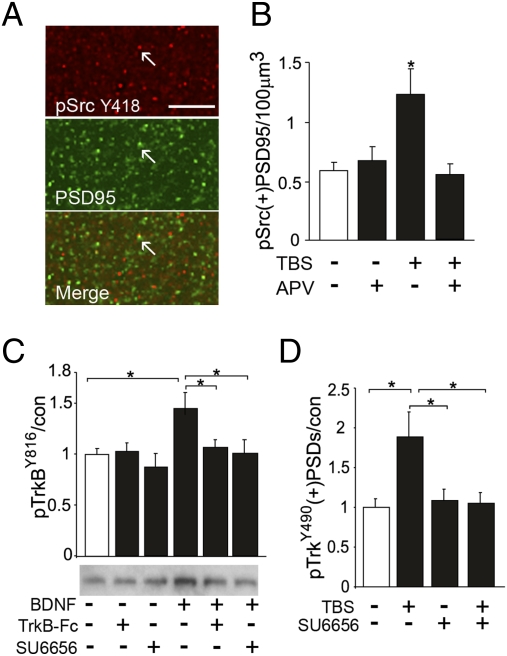Fig. 4.
TBS-driven increases in spine pTrkB are Src-dependent. (A) Images show pSrcY418 (red), PSD95 (green), and overlapped immunolabeling in CA1 str. radiatum (yellow shows colocalization in Merge, arrows). (Scale bar: 10 μm.) pSrcY418 immunoreactivity is punctate and concentrated in postsynaptic elements. (B) Numbers of pSrcY418 and PSD95 double-immunolabeled [pSrc(+) PSD95] puncta in str. radiatum of hippocampal slices that received TBS or control stimulation, with and without 50 μM APV in the tissue bath. The pSrc+ synapses were more numerous in TBS than control slices (*P = 0.01 two-tailed t test; n = 6/group) and this effect was blocked by APV. (C) Representative Western blot and quantification of band densities shows that BDNF (5 min, 60 ng/mL) applied to synaptoneurosomes prepared from the adult forebrain increased levels of pTrkBY816 immunoreactivity; cotreatment with Src antagonist SU6656 (20 μM) or TrkB-Fc (2 μg/mL) blocked this effect (*P < 0.05, n = 8/group). (D) Plot shows that in hippocampal slices 30 min infusion of SU6656 blocked increases in pTrk(+)PSDs normally present in slices collected 7-min post-TBS (*P < 0.05, n = 6–9/group).

